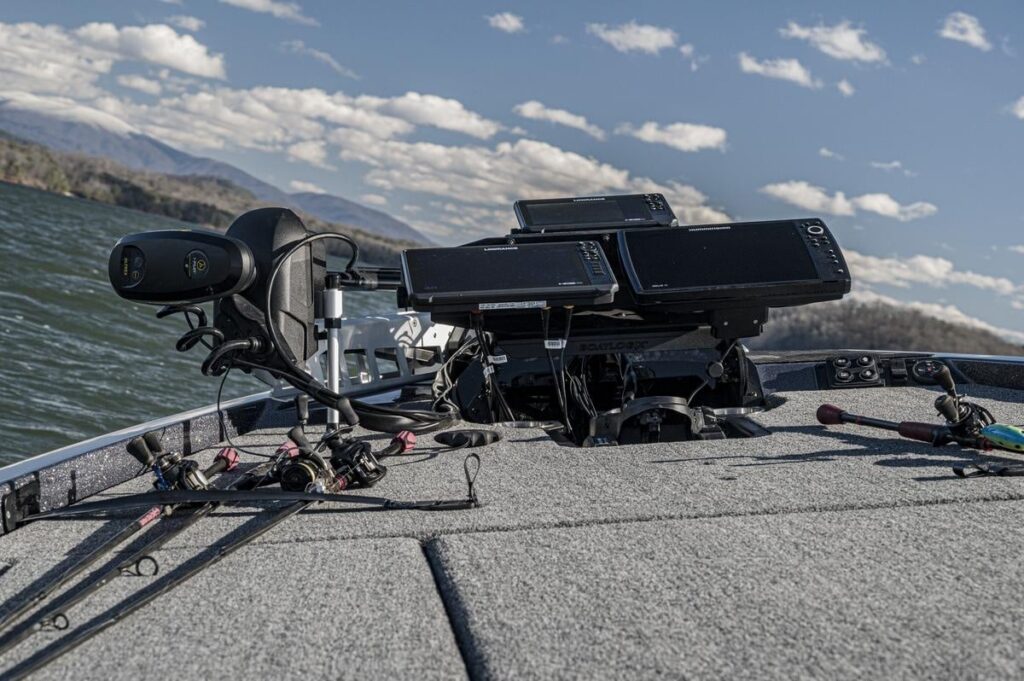Is B.A.S.S. Banning Forward-Facing Sonar in 2026?
No, B.A.S.S. is not completely banning forward-facing sonar (FFS) in 2026, but it is restricting its use in the Elite Series. Starting that year, FFS will only be allowed at five out of nine regular-season Elite events, with the remaining four tournaments being FFS-free zones including during practice. The exact tournaments where FFS will be banned or permitted will be determined by a public random draw on September 4, 2025.
This move aims to balance modern technology with traditional angling skills, challenging competitors to prove themselves in multiple fishing styles. The rule change is supported by both veteran and younger pros and signals a shift in how bass tournaments value instinct, versatility, and fan experience.
This change only applies to the Elite Series, not to B.A.S.S. Opens or other divisions (unless otherwise updated).
A Tech Tornado Hits Bass Fishing’s Heart
If there’s one thing bass fishing is good at, it’s self-examining on the fly. And right now, the sport’s staring into its high-tech reflection and sparking a real rebellion. B.A.S.S. has dropped a rule change for the 2026 Elite Series forward-facing sonar (FFS), that seductive digital second sight, is suddenly not welcome at every table.

Here’s how it’s slicing the deck: come 2026, anglers will only get to flirt with live sonar in five of the nine regular-season tournaments. The rest? A hard ban, even during practice. No screen. No shortcuts. Just old-school grit and skin-deep instincts. Which tournaments let you get away with a little cheating? B.A.S.S. is flipping a coin on that in a public live show on September 4. Up to five could become battlegrounds of tradition.
A Reckoning for the Old Guards… and the New Breed
For seasoned anglers the ones who learned to read water like lines on their palms this feels like a second wind. Guys like Bill Lowen and Mike Iaconelli, who built their rep before sonar glowed in every cockpit, are finally getting their moment. As Davy Hite, a Bassmaster Classic champ, put it: this isn’t just a rule it’s a discovery test. Prove you can crank shallow, skip docks, mark staging fish by feel, not by flickering shadows.
But this isn’t an old-timers’ coup. The ABP (Angler Board of Professionals) the young guns too voted for this hybrid, this collision of tradition and tech. They know the screen’s seductive but they also know the sport’s soul can’t be defined by pixels. To win in 2026, you’ll need to adapt. Switch from sonar to gut and back again. The new AOY won’t just be the best they’ll be the most versatile.
A Movement Sparking Beyond the Elite
And don’t think this is isolated. Out in Texas, for grassroots anglers, the Outlaw Outdoors circuit is already waving goodbye to sonar hands held high over purity and participation. They blame tech overload for dropping entries, and they’re betting restoring old-school etiquette will bring the fun and the boats back.
So where does that leave B.A.S.S.? Not banning sonar, but recontextualizing it giving it a place, not letting it run the show. A coin flip decides who gets to use it, and who doesn’t. Contestants show up with rods, not remotes. Fans rediscover the suspense of a fisherman’s instinct, not a screen’s clarity.
The sport’s tipping. And for the anglers stepping into 2026, one thing’s true: you either learn to dance without the screen, or you watch from the shore.
